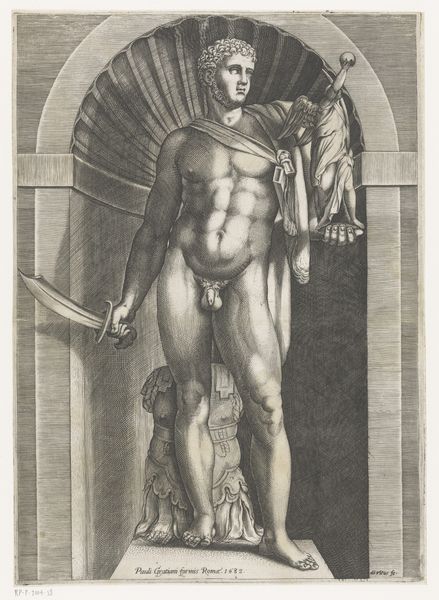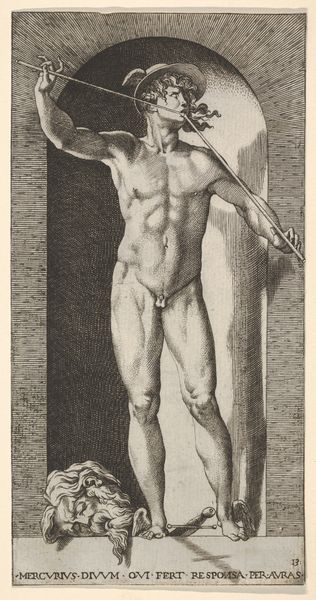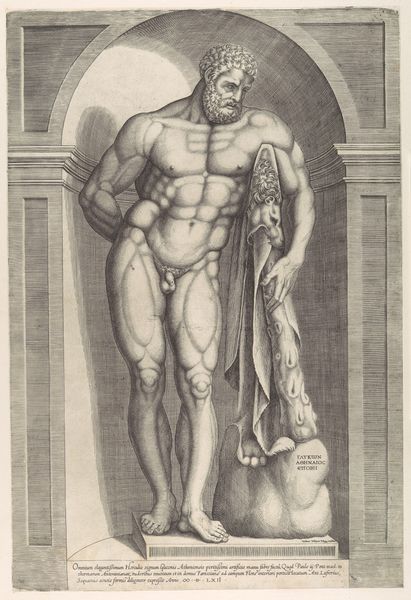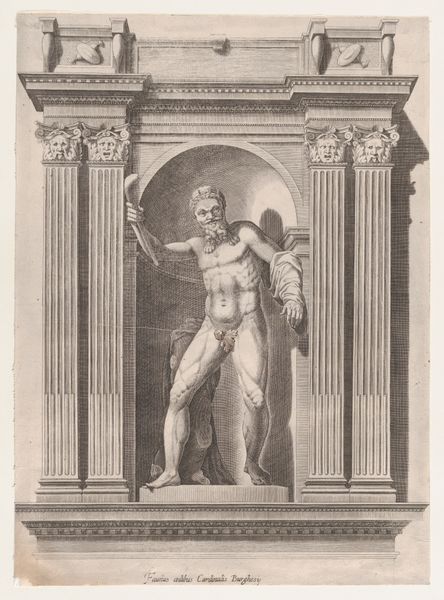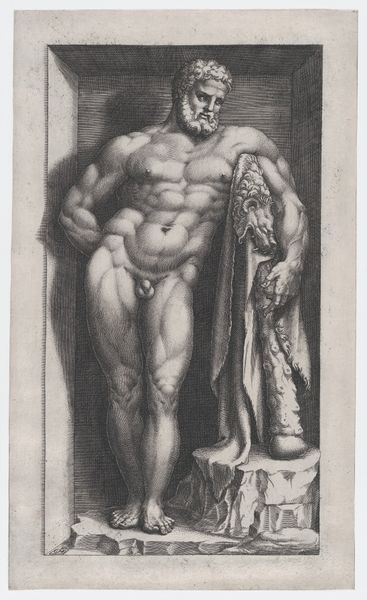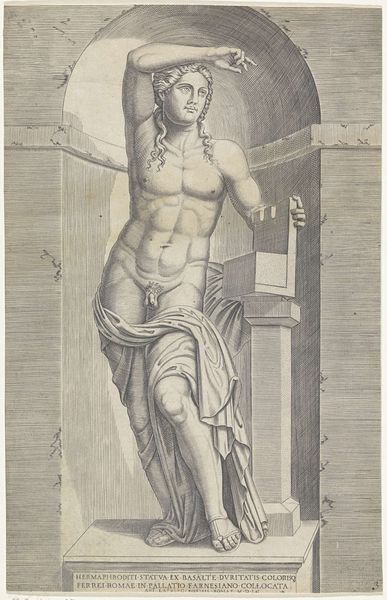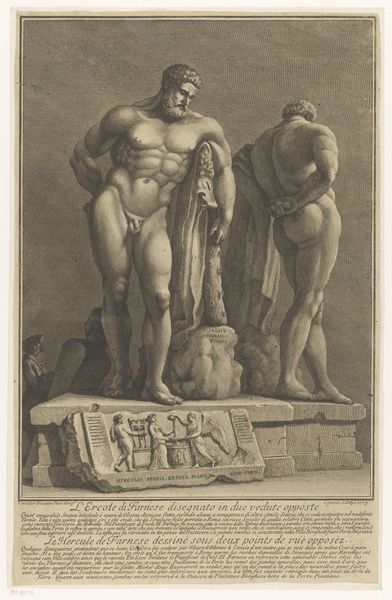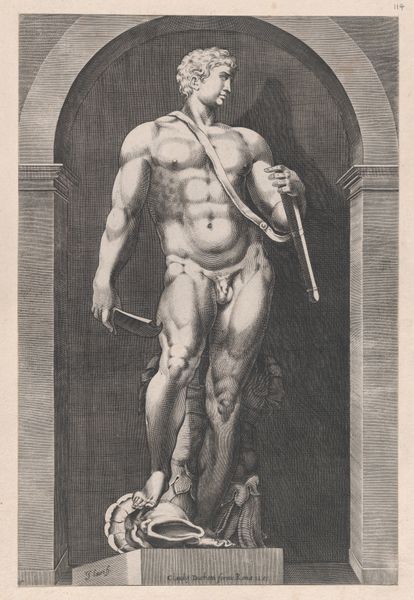
Speculum Romanae Magnificentiae: Apollo Belvedere 1552
0:00
0:00
drawing, print, sculpture, engraving
#
drawing
# print
#
greek-and-roman-art
#
mannerism
#
sculpture
#
history-painting
#
nude
#
engraving
Dimensions: sheet: 18 5/16 x 13 3/16 in. (46.5 x 33.5 cm) plate: 13 x 9 1/16 in. (33 x 23 cm)
Copyright: Public Domain
Marcantonio Raimondi made this print of the Apollo Belvedere, sometime before 1534, using a metal plate and a painstaking process of engraving. Look closely and you’ll see it’s made of thousands of tiny etched lines. Raimondi used a tool called a burin to cut these lines into the metal, creating an image that could be reproduced many times over. The incised plate was then inked and pressed onto paper, transferring the image. Engraving was a skilled craft, requiring precision and control. Unlike a drawing or painting, the engraver couldn’t easily erase or rework mistakes. Each line had to be carefully planned and executed. Note how the density and direction of the lines create shading and volume, giving the figure a sculptural presence. The print's stark black and white contrast focuses our attention on the technical skill of the artist, whose labor made the original sculpture accessible to a wider audience. This challenges the traditional hierarchy of artistic mediums, by elevating printmaking from a mere reproductive technique to a highly skilled art form.
Comments
No comments
Be the first to comment and join the conversation on the ultimate creative platform.

